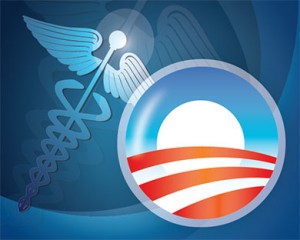by Liz Thatcher • RealClearPolicy
 These days, it seems not a week goes by without a new hidden cost in the Patient Protection and Affordable Care Act, better known as Obamacare, coming to light. This time it’s Section 4205, a provision that imposes a costly, one-size-fits-all regulation on restaurants and grocery stores: Any food-service establishment with 20 or more locations must display calorie counts on its menus.
These days, it seems not a week goes by without a new hidden cost in the Patient Protection and Affordable Care Act, better known as Obamacare, coming to light. This time it’s Section 4205, a provision that imposes a costly, one-size-fits-all regulation on restaurants and grocery stores: Any food-service establishment with 20 or more locations must display calorie counts on its menus.
If implemented in its current form, this provision would be ineffective in fighting obesity. Many restaurants already publish calorie counts for customers who might want them. Domino’s, for example, offers an online Cal-o-meter that helps customers calculate the calories in their pizza.
Further, New York has already tried this type of legislation, and research by Brian Elbel of the New York University School of Medicine indicates that these menu-labeling regulations simply don’t work. Elbel examined the receipts for four different fast food chains before and after the calorie-count regulation went into place. He told The New York Times that he found no substantial change in consumers’ orders. “It’s becoming increasingly clear that nothing big is happening for a large group of people,” he said. He did similar research in Philadelphia in 2010, with similar results.
Section 4205 also would undermine competition by imposing higher costs on businesses through new signage mandates. For instance, every time a grocery store introduced a new soup to its soup bar, it would have to come up with a new sign complete with a calorie count. This would create costs for every new item offered. In effect, retailers would be punished for offering consumers greater variety.
In some cases, restaurants could minimize this problem by listing calorie ranges rather than precise calorie counts — which would make the new labels even less helpful. For example, Domino’s CEO J. Patrick Doyle reports that there are 34 million ways to order a pizza at his chain, and as a result some menu items would have calorie ranges as wide as 2,000. Also, for most customers, pizza is a shared meal, so nutritional value by the slice would be more useful than the nutritional value of an entire pizza, which is what the new rule would require Domino’s to provide. Doyle calculated that menu labeling could cost each Domino’s restaurant $1,600 to $4,700 annually.
That’s not all. Similar laws already enacted in California and New York State exempt grocery stores and gas stations. This new regulation would end that exemption, thus exceeding the requirements of two of the most overregulated states in the country.
Given the significant costs Section 4205 imposes, it’s worth asking who would benefit from it or support it. The National Restaurant Association lobbied to include Section 4205 in Obamacare, allegedly to encourage “national uniformity,” not only for its members, but also for gas stations and grocery stores that sell ready-made food.
To put it differently, as the association itself presented its reasoning, it wanted to impose on others the burdensome rules that some of its members already suffered from. In addition, the association’s big restaurants likely supported the requirement as a way of getting a leg up on their medium-sized competitors — a restaurant with just 20 or 30 locations will have a harder time implementing these rules than will a huge nationwide chain. This is rent-seeking plain and simple, manipulating regulation to put competitors at a disadvantage.
Worse, it appears the 20-location threshold is so much window dressing. The NRA successfully lobbied the U.S. Food and Drug Administration to subject all members of IGA (formerly known as the Independent Grocers Alliance) to Section 4205, thus expanding government regulation to smaller grocery stores with only a few locations. The IGA represents small, independent grocers, many of which have only a few locations in a single town or city. While all IGA stores share a logo, their ready-made food, like a soup or salad bar, may be made every day as opposed to being standardized across the nation. In other words, IGA franchises are far more independent than, say, Burger King franchises.
Section 4205 also would mean less choice for consumers. For grocery stores and gas stations, it may be easier and less costly to stop offering ready-to-eat food than to comply with the new regulations.
Neither restaurants nor grocery stores nor any other food-service establishments should have to comply with these burdensome, overly detailed regulations. In a lagging economy, imposing more costs on businesses is the last thing Washington should be doing.
Remember when Rep. Nancy Pelosi said Congress had to “pass the bill so you can find out what’s in it”? Her line became the butt of jokes. But now we are finding out what actually is in the bill, and it’s no laughing matter.
. . . . . . . . . . . . . . . .
Liz Thatcher is an adjunct analyst at the Competitive Enterprise Institute.